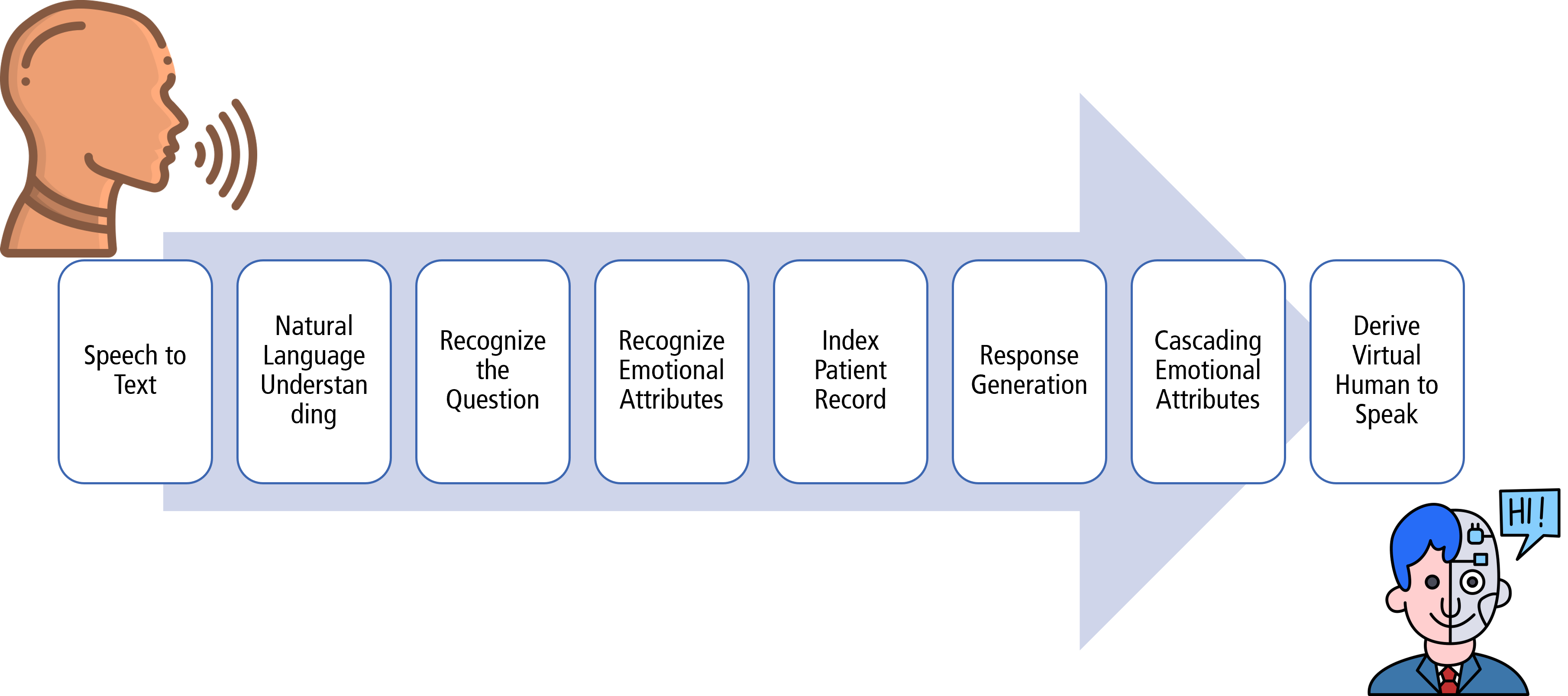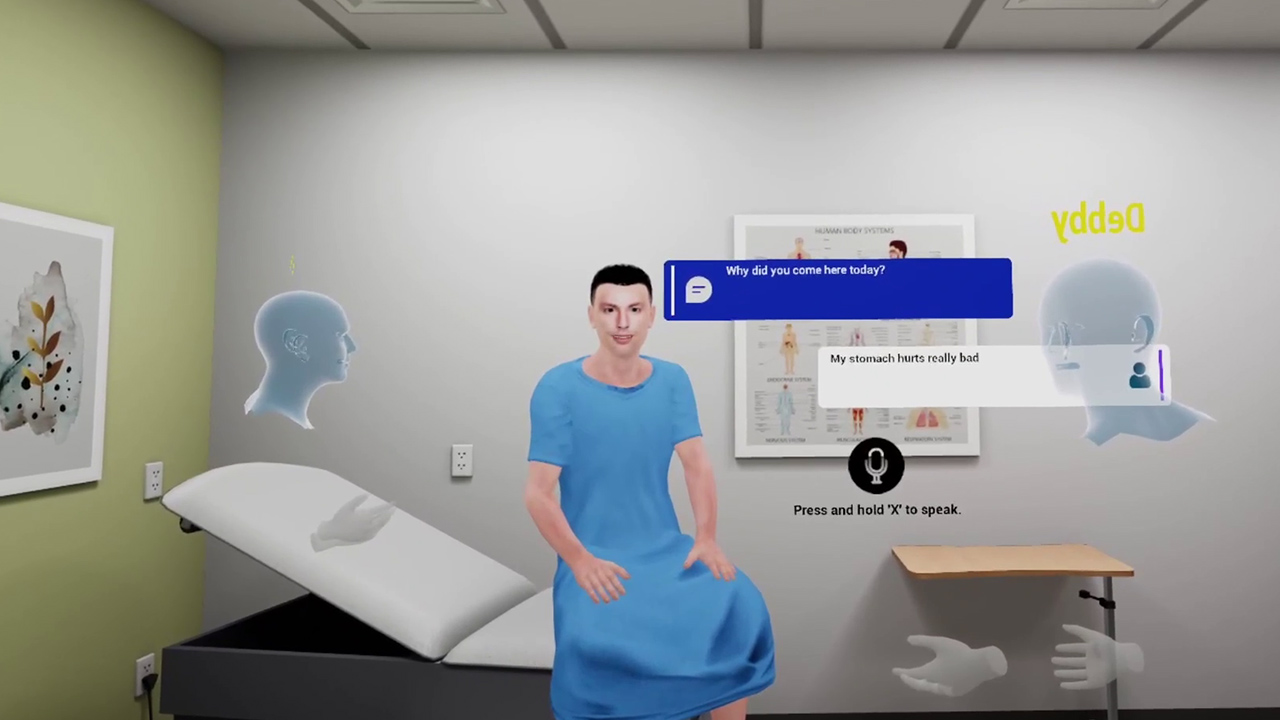Are you preparing to meet a prospective customer or do you have to talk to a co-worker over policy violations or do you have an important job interview coming up or are you looking forward to presenting a new idea to the management team? All these instances require a person to be in the best possible frame of mind and absolutely prepared to ensure desired outcomes. A little slip here and a slight miss there may make things go south. So how does one prepare for such conversations? Thankfully technology has advanced to unimaginable limits and now we have something called AI. Soft skills training with conversational AI paired with VR can prove to be a highly effective way to help prepare for such critical scenarios.
What is conversational AI?
Shall we say an artificial intelligence that can converse? We would not be wrong in saying that. Conversational AI refers to a type of artificial intelligence that enables a two-way interaction between computer applications and humans. It could be involving either speech or text modalities. This is very much similar to the type of interaction two humans would have.
Me: Alexa, “What is the capital of Vanuatu?”
Alexa: “The capital of Vanuatu is Port Villa.”
That is an example of conversational AI for you. You ask the application a certain question and you get an appropriate answer. This is just a rudimentary instance. The uses of conversational AI include providing information, customer care services, appointment scheduling, suggesting recommendations to customers, grievance registrations, resolution of customer problems, to name a few.
In fact, almost all of us at some point have come in contact with it but may have not realized it. For example, did you place an online order for an item and receive a defective or wrong item? You go back to the shopping portal, access customer service and are directed to enter your grievance as text in a chat. This ‘customer care executive’ on the other end is an AI that helps resolve your query or grievance.
How does conversational AI work?
Conversational AI makes use of a group of technologies to deliver the final output in every interaction. These include Automated Speech Recognition (ASR), Natural Language Processing (NLP), Advance Dialog Management, and Machine Learning (ML). NLP in itself is composed of two elements, Natural Language Understanding (NLU) and Natural Language Generation (NLG) with both elements coming into play at different stages of the conversation.
The more it is used, the more data is fed into it and the more ‘intelligent’ it becomes. This is because of ML running in the background.

A graphic representation of the conversation process between humans and AI.
Soft Skills Training with Conversational AI and VR
Virtual reality environment possesses an immersive quality. A user steps into a virtual environment to be detached from the real world and become part of a new set up. Realistic virtual environments serve as excellent training grounds as they are safe and allow a user to take chances. A mistake does not prove catastrophic, no matter how grave it is. If virtual characters in these environments are enabled to hold a realistic human-like conversation the immersive quotient increases to a great extent. Combining soft skills training with conversational AI and VR can be an effective way to learn, practice, and polish skills. This means of training will be highly effective compared to traditional methods as it packs in various benefits.
Personalized training: AI responses are guided by the user’s questions. This makes every user’s AI-based training session unique or shall we say, personalized.
Increased engagement: Instead of getting pre-programmed answers and feedback, AI-based characters respond like humans. The user finds this close to normal and experiences an enhanced level of engagement when interacting with these characters.
Enhanced realism: AI-based virtual humans are fed a massive amount of data from which they derive the best possible response to a given question making a session very realistic and real-world like.
Repeated practice sessions: Virtual humans may respond like real humans but they do not tire alike. Users can practice as many times as desired without the virtual human getting exhausted or having run out of patience.
[ Conversational AI in MedVR Ed Open Scenarios ]
Non-judgmental training environment: “What would my trainer or fellow trainees think if I go wrong?” This a botheration that many are afflicted by. No matter how ‘smart’ the virtual human is, it will not judge a learner. So, that nagging can be put to rest.
All-round training: AI-powered virtual humans are equipped with a huge load of data. It encompasses a wide range of subjects making it possible to train a learner in a multifaceted manner. Varied aspects of a given scenario can be presented, including the rarest kind, exposing users to multiple dimensions of one given situation.
Soft skills training with conversational AI and VR is a promising means to achieve desired results. Learners, on one hand, get an all-round learning experience, trainers on their part are able to offer an effective means of learning to help learners perform better.
Contact Us to create engaging and immersive AR educational content or to know more about our immersive architecture.




